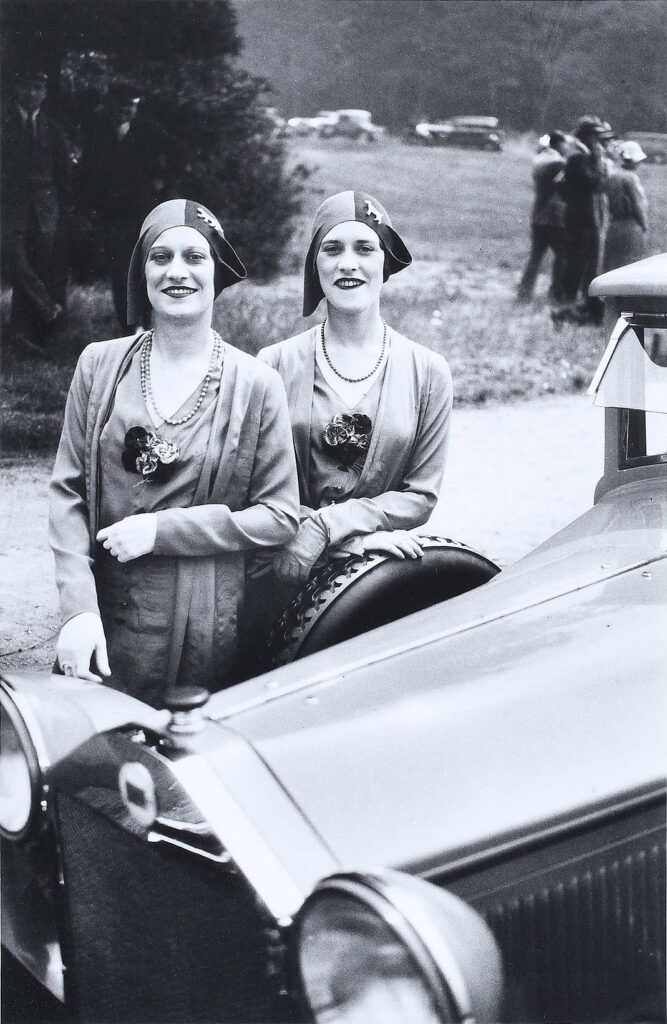Jacques-Henri Lartigue
Jacques‑Henri Lartigue (1894–1986) was a French photographer and painter celebrated for the spontaneous, joyful images he began making in childhood and continued throughout his life. Born on June 13, 1894, in Courbevoie near Paris, he received a large‑plate camera at age seven—which he operated by standing on a stool—and a Brownie No. 2 the following year. His early photographs, almost always candid shots of family and friends, reflect an upper‑middle‑class childhood filled with automobiling, seaside promenades, and kite flying, all captured with a free spirit and a love of movement rather than a concern for technique.
Lartigue studied painting at the Académie Julian in 1915–16 and always regarded himself primarily as a painter. Yet it was his photographs—taken throughout the 1910s and ’20s of automobile races, fashionable ladies at leisure, and park scenes—that established his reputation. Working mainly in black and white, he also experimented with the Autochrome color process, satisfying his painterly instincts. In the 1930s and ’40s he continued to document middle‑class leisure with the same charm and detachment from the traumas of world war, later extending his subjects to include scenes from England and the United States well into his nineties.
Lartigue’s oeuvre was rediscovered by art historians in the early 1960s and featured in a Museum of Modern Art exhibition in New York City in 1963. Audiences embraced his departure from the formal, posed portraits typical of early photography and admired the ingenuous delight of his vision. He was made a chevalier of the Legion of Honour in 1975. Major publications of his work include Diary of a Century (1970, reprinted 1978), Les Femmes aux cigarettes (1980), and Les Autochromes de J.‑H. Lartigue, 1912–1927 (1980). Through a lifetime of seeing the world as a kinetic playground, Jacques‑Henri Lartigue left a legacy of images that continue to inspire with their unguarded joy and timeless elegance.
Photography & Works
-

Jacques-Henri Lartigue
A Portfolio by Jacques Henri Lartigue Add to cart -

Jacques-Henri Lartigue
Bobsled race – Zissou and Madeleine Thibault in the bobsled. Mme. Folletête, Tatane & Maman Rouzat Add to cart -

Jacques-Henri Lartigue
Cousin Bichonade in Flight Add to cart -

Jacques-Henri Lartigue
Drag-racing day at the Auteuil races – Paris, June 23 1911 Add to cart -

Jacques-Henri Lartigue
Famous Rowe Twins of Casino de Paris Add to cart -

Jacques-Henri Lartigue
Gordon Bennett Cup. The Auvergne Races- Duray at the wheel of the Lorraine Dietrich carrying #13 finished number six. July, 1905 Add to cart -

Jacques-Henri Lartigue
Grand Prix of the A.C.F.- the great racing driver Nazzaro signals Wagner to accelerate Add to cart -

Jacques-Henri Lartigue
Grand Prix of the Automobile Club of France Add to cart -

Jacques-Henri Lartigue
In front of the Dauphine Pavillion (Club de L’etrier), Paris, 1912 Add to cart -

Jacques-Henri Lartigue
Kerisdan, Brittany Add to cart -

Jacques-Henri Lartigue
Marcelle’s first communion, Le Mans Add to cart -

Jacques-Henri Lartigue
Mardi Gras Add to cart -

Jacques-Henri Lartigue
My Brother, Zissou, Gets His Glider Airbourne, Chateau de Rouzat Add to cart -

Jacques-Henri Lartigue
Picasso Add to cart -

Jacques-Henri Lartigue
Rouzat, Autoportrait Add to cart -

Jacques-Henri Lartigue
Simone Roussel on the Beach at Villerville Add to cart -

Jacques-Henri Lartigue
Wheeled Bobsleigh Designed by Jacques Henri Lartigue Add to cart -

Jacques-Henri Lartigue
Woman with Fox Fur, Avenue des Acacias Add to cart -

Jacques-Henri Lartigue
Zissou, The Voisin Aeroplane Merlimont Add to cart



